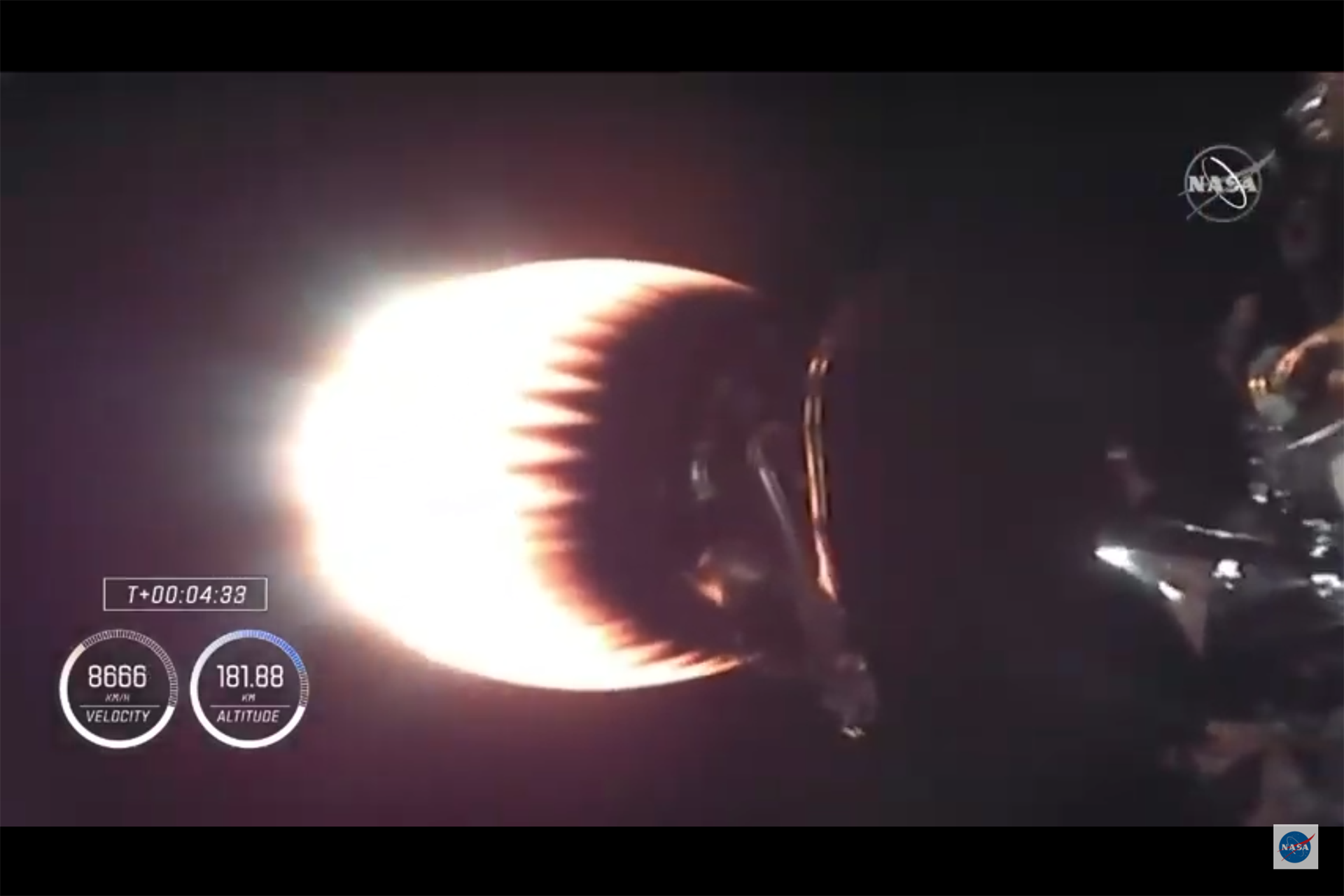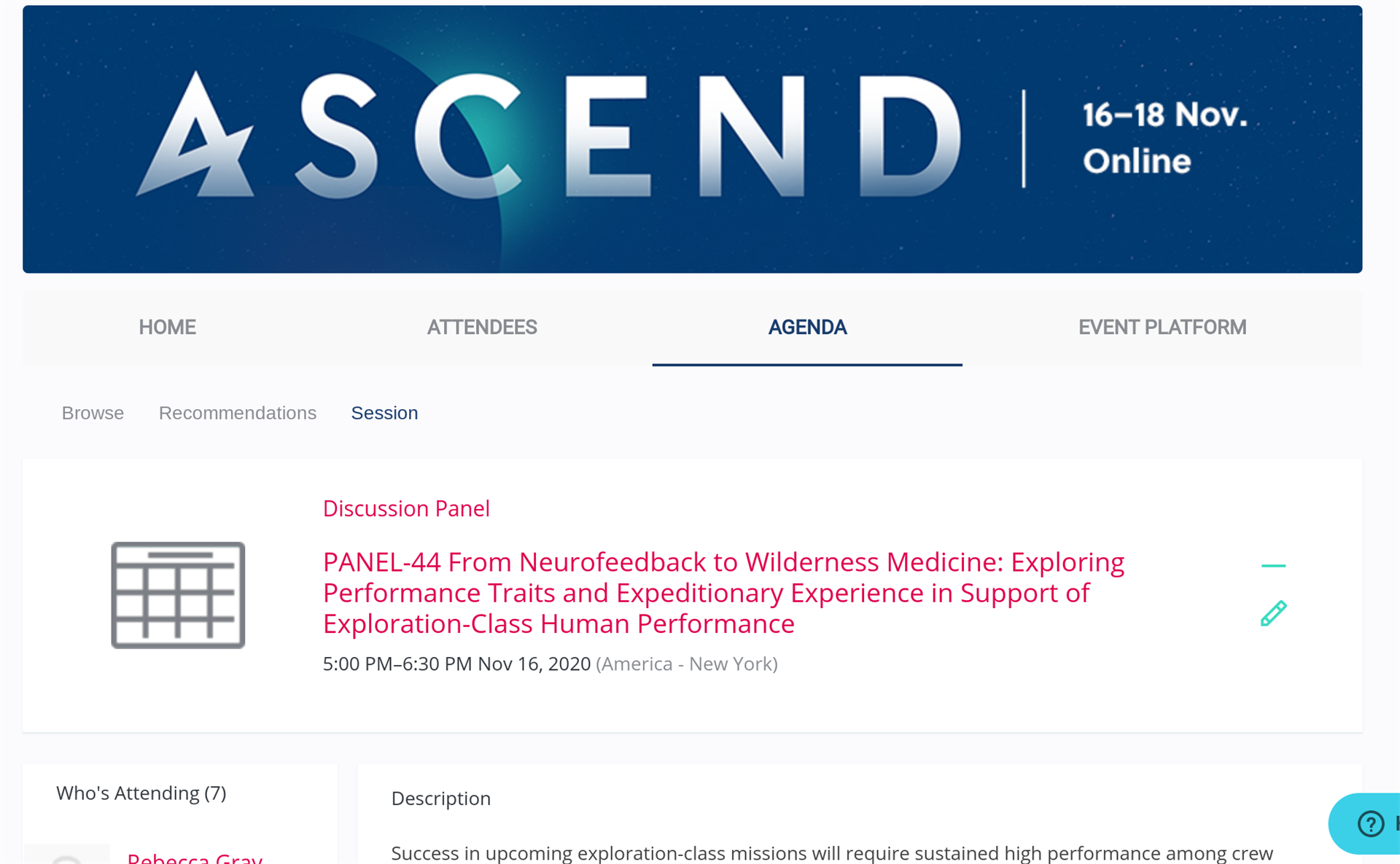Last night saw the return of operational crewed launches to the ISS from Cape Canaveral. SpaceX successfully launched its Crew-1 mission in partnership with NASA, and in so doing established the foundation for regular commercial crew launches. This achievement was based on more than a decade of engineering and programmatic advances, as well as a progressive vehicle qualification schedule, and is a key step in the sustainable commercialization of low Earth orbit. Crew Dragon Resilience is planned to deliver the 4-person crew to ISS tonight.

Crew-1 second stage. Photo @NASA, 2020.
This launch is part of a larger ecosystem of crewed mission development. NASA’s Suborbital Crew Office recently conducted an industry-oriented RFI, with the goal of better understanding commercial capacity to fulfill NASA demand categories for suborbital crew. These categories include astronaut training, testing and qualification of spaceflight hardware, and human-tended microgravity research, for which providers have offered their newest vehicles to provide these services. This includes Blue Origin’s New Shephard, whose team continues to develop flight profiles that will accommodate each of these categories. This process also allows SubC to specify its role in qualifying commercial partners, alongside the FAA.
The successful Crew-1 launch coincides with the start of ASCEND, a unique industry conference built on a framework of innovation and collaboration. This year’s event, designed to accommodate COVID realities, is oriented toward space industry, commercialization, and policy, as well as interdisciplinary state-of-the-research. Part of this event are discussions on the latest lines of inquiry for retiring risk to human spaceflight profiles. ASP has contributed to this discussion, sharing some of the latest work by its membership in human research, as well as collaborations on the future of space medicine. These sessions will highlight member advancements as well as frontiers in human spaceflight.

ASP’s latest conference contributions: ASCEND 2020 PANEL-44 and META-11.
Beyond LEO, public and private entities will need to address key research gaps for human health and performance, as part of the advancement of crewed flight profiles. For example, NASA’s Behavioral Health and Performance Flight Operational Support has indicated the importance of operationally-relevant performance thresholds and metrics of resilience to key concerns for maintaining crew performance in long-duration settings. Ongoing research, including under the auspices of NASA’s Human Research Roadmap, has the capacity to enable this type of sustainable human presence within and beyond LEO. Contributions to this body of work include research proposals aimed at developing innovative approaches to training for expeditionary performance. Neurofeedback protocols, for example, have the potential to support health and performance using noninvasive neuromonitoring.
Crew Dragon is an example of rapid technological advancement that rewrites what is possible for crewed architectures. The vehicle’s team has demonstrated accelerated development timelines while continuing progressive safety demonstrations. As we build upon the success of the Crew-1 launch, we look to the horizon for crewed flight profiles and the research and engineering gaps that will enable them.
ASP’s membership continues its work in the advancement of spaceflight milestones. Find out more about this work here.
